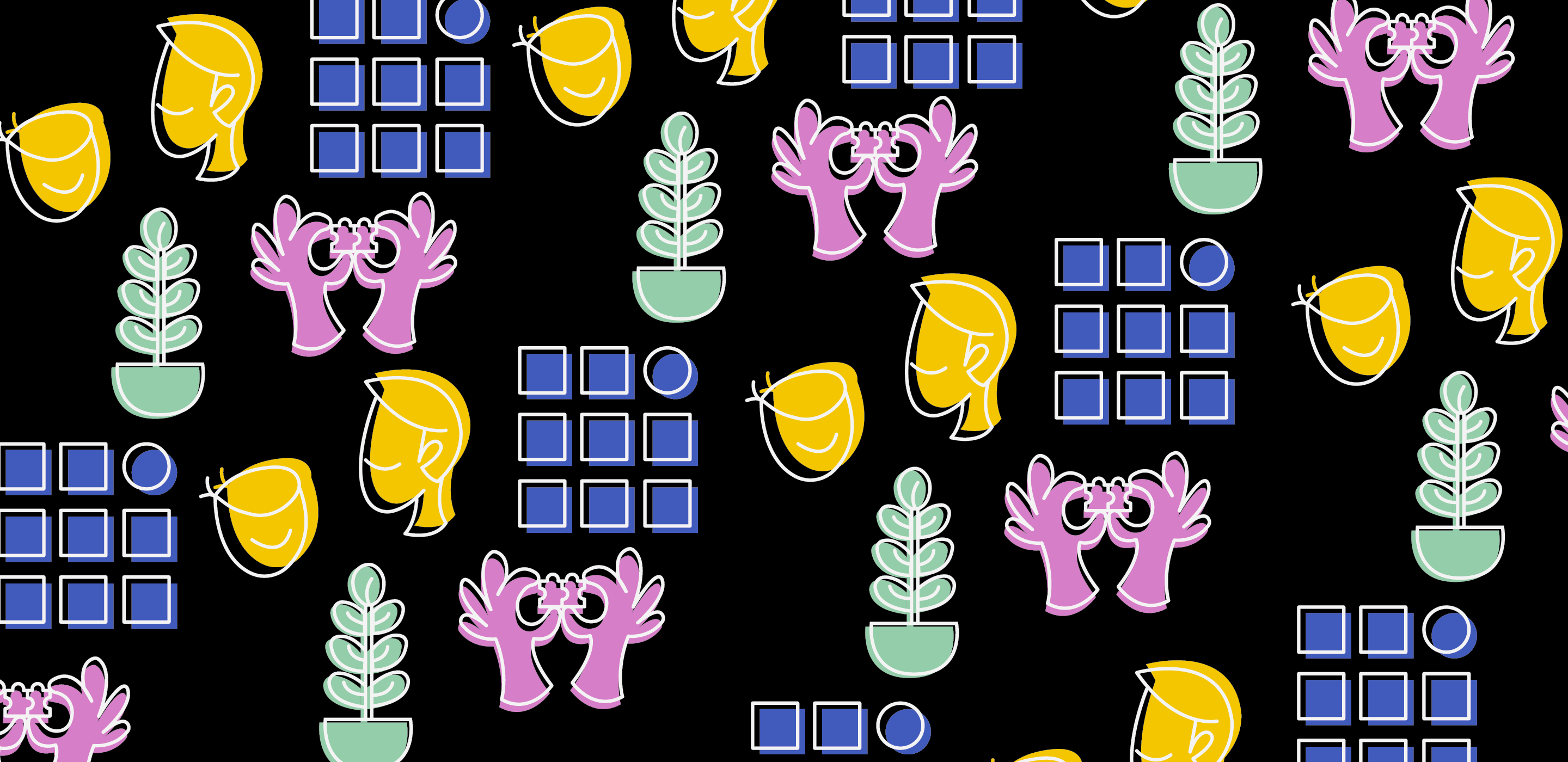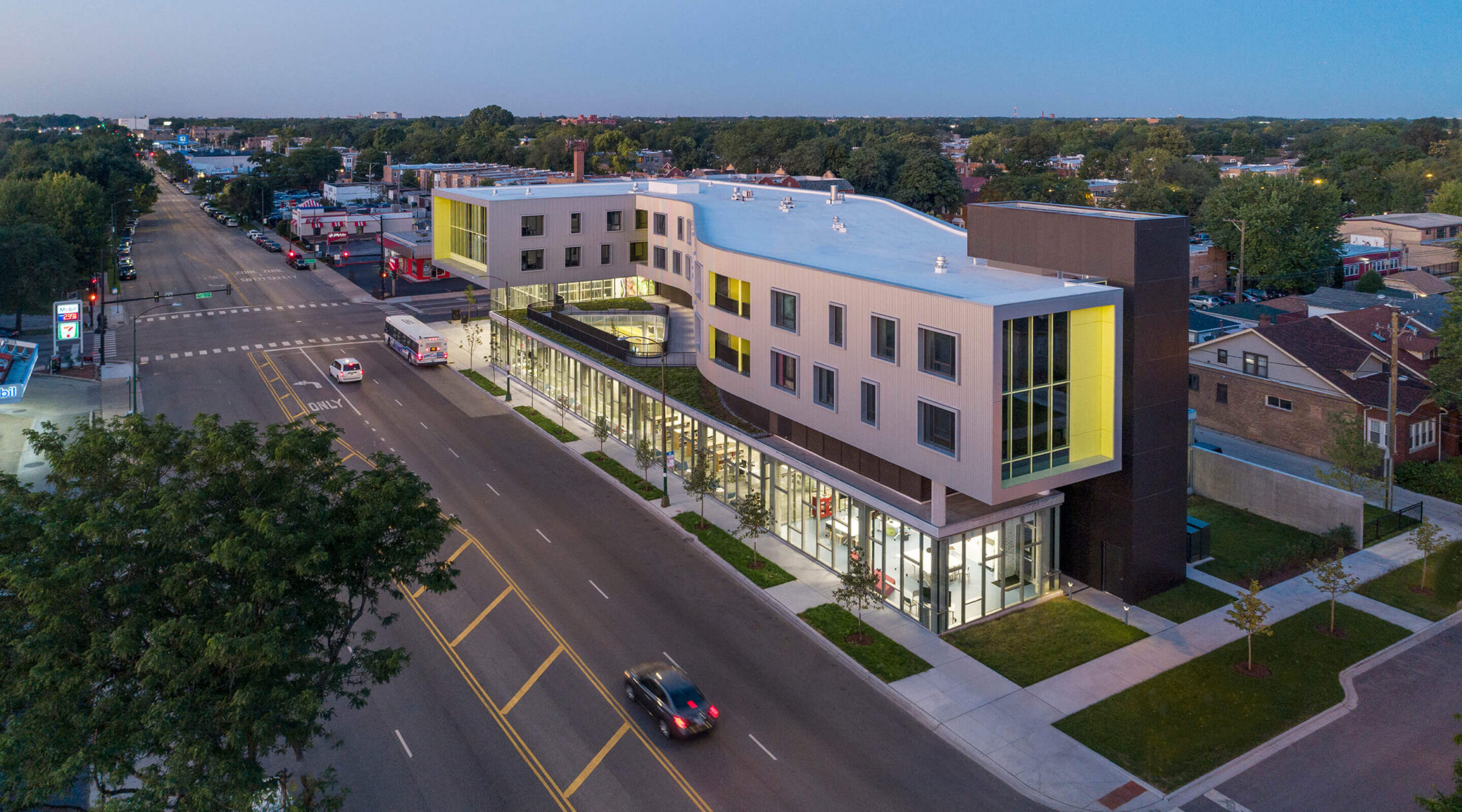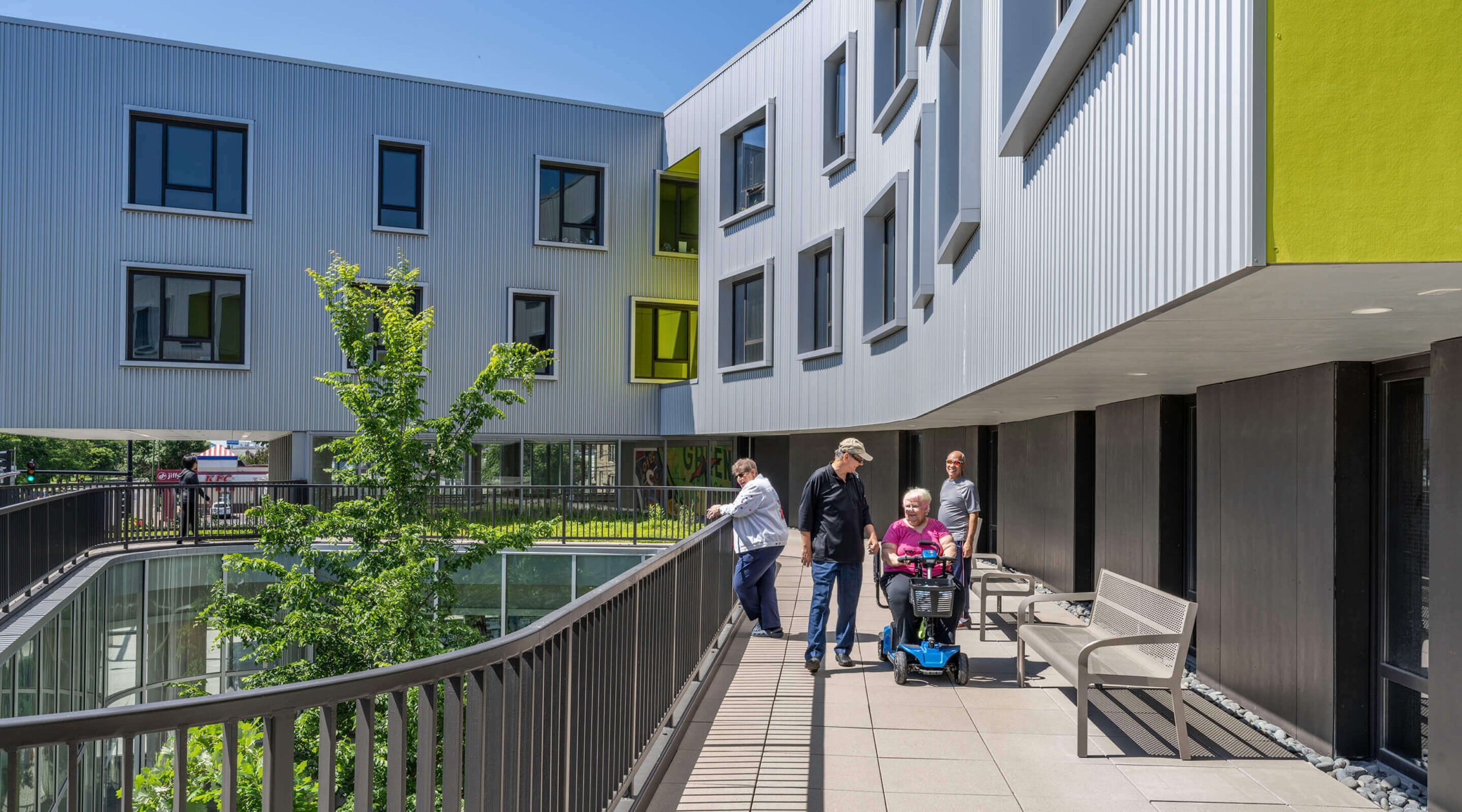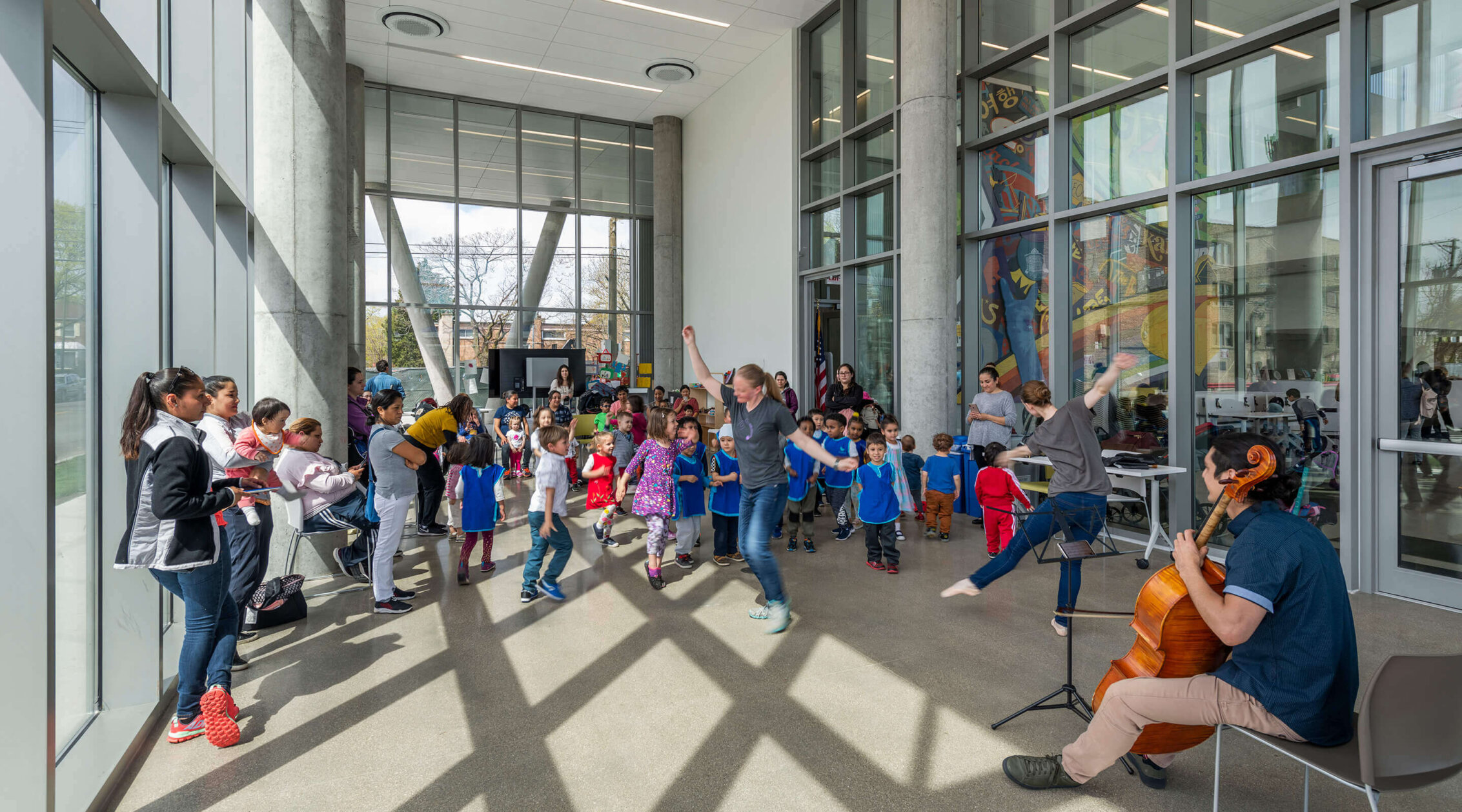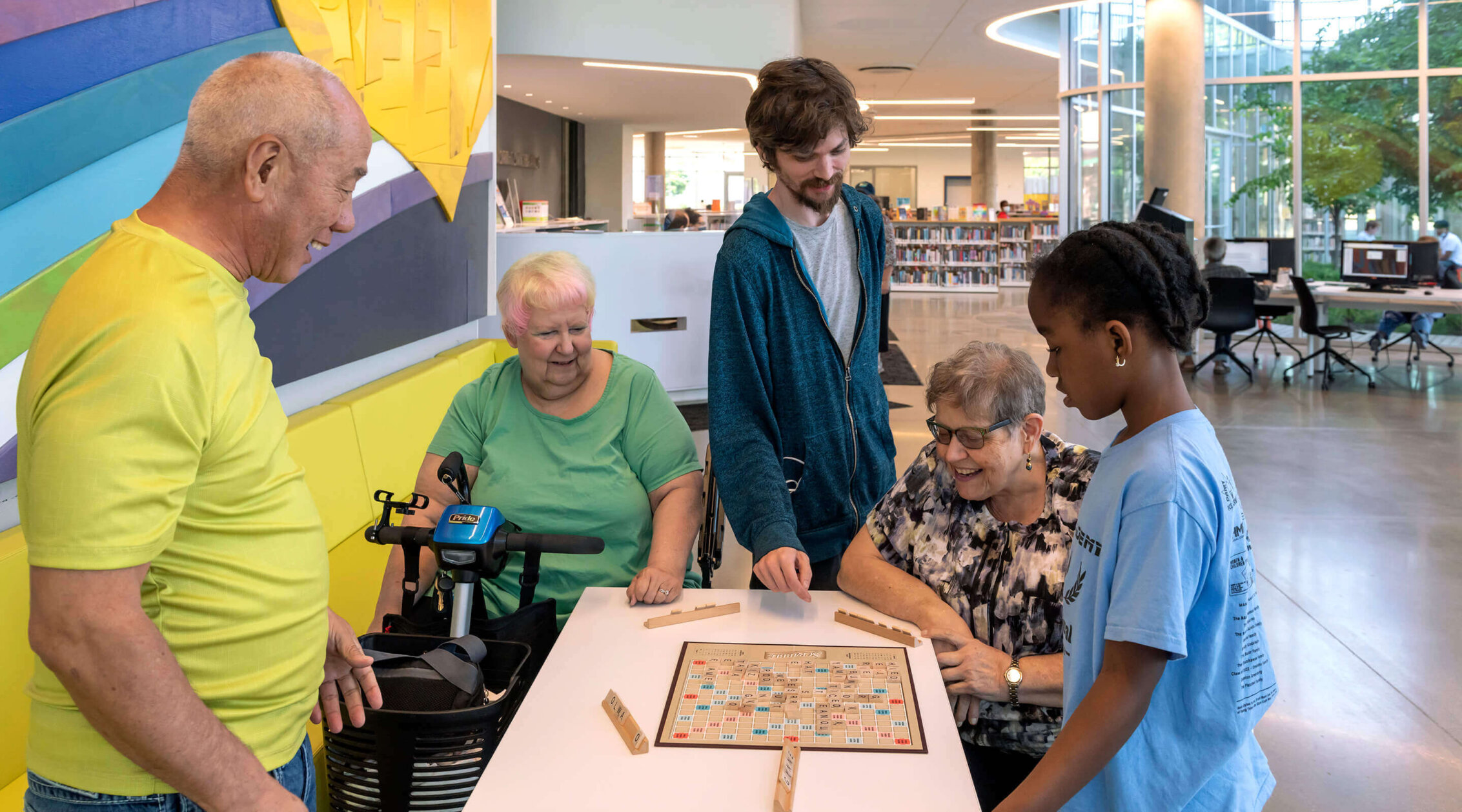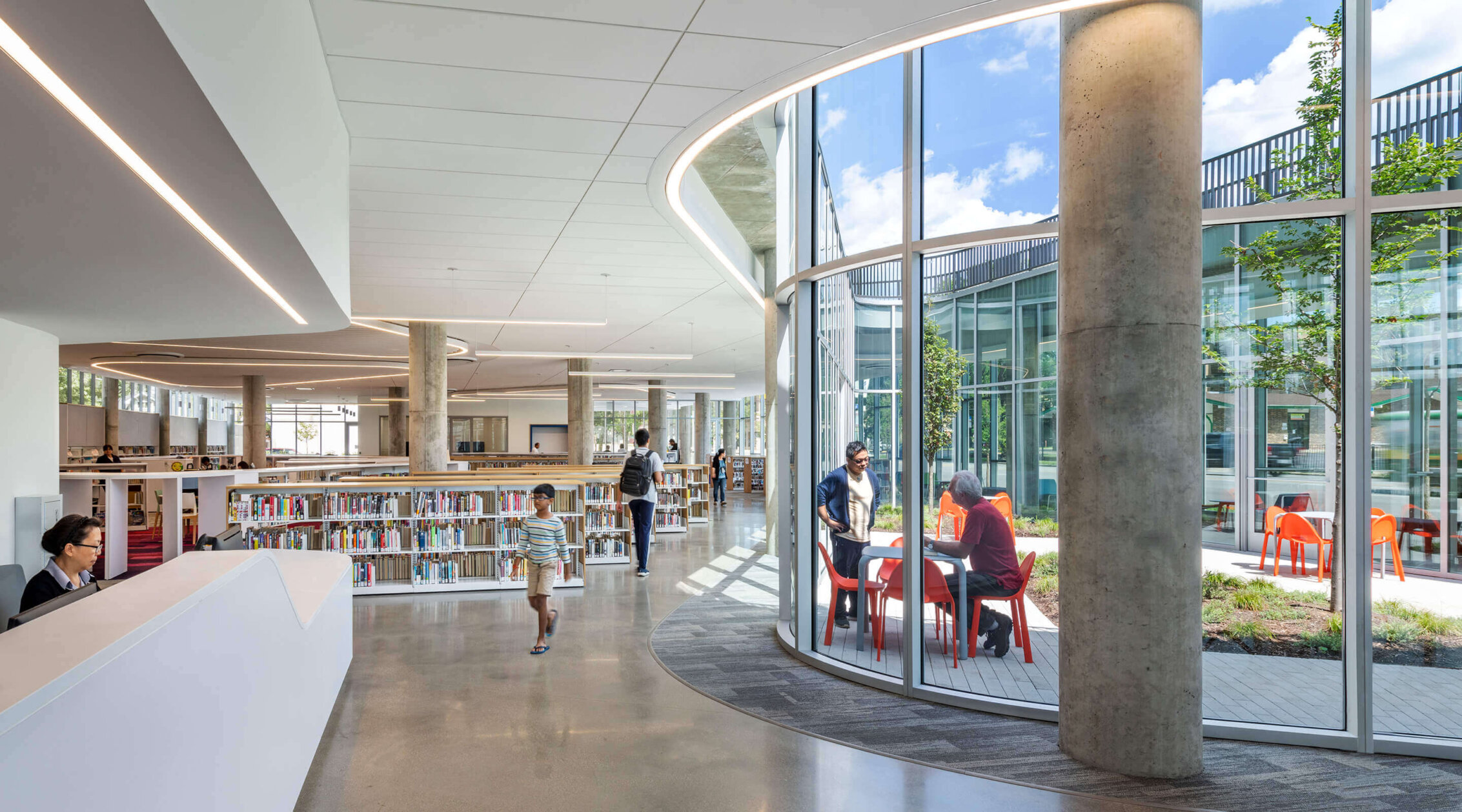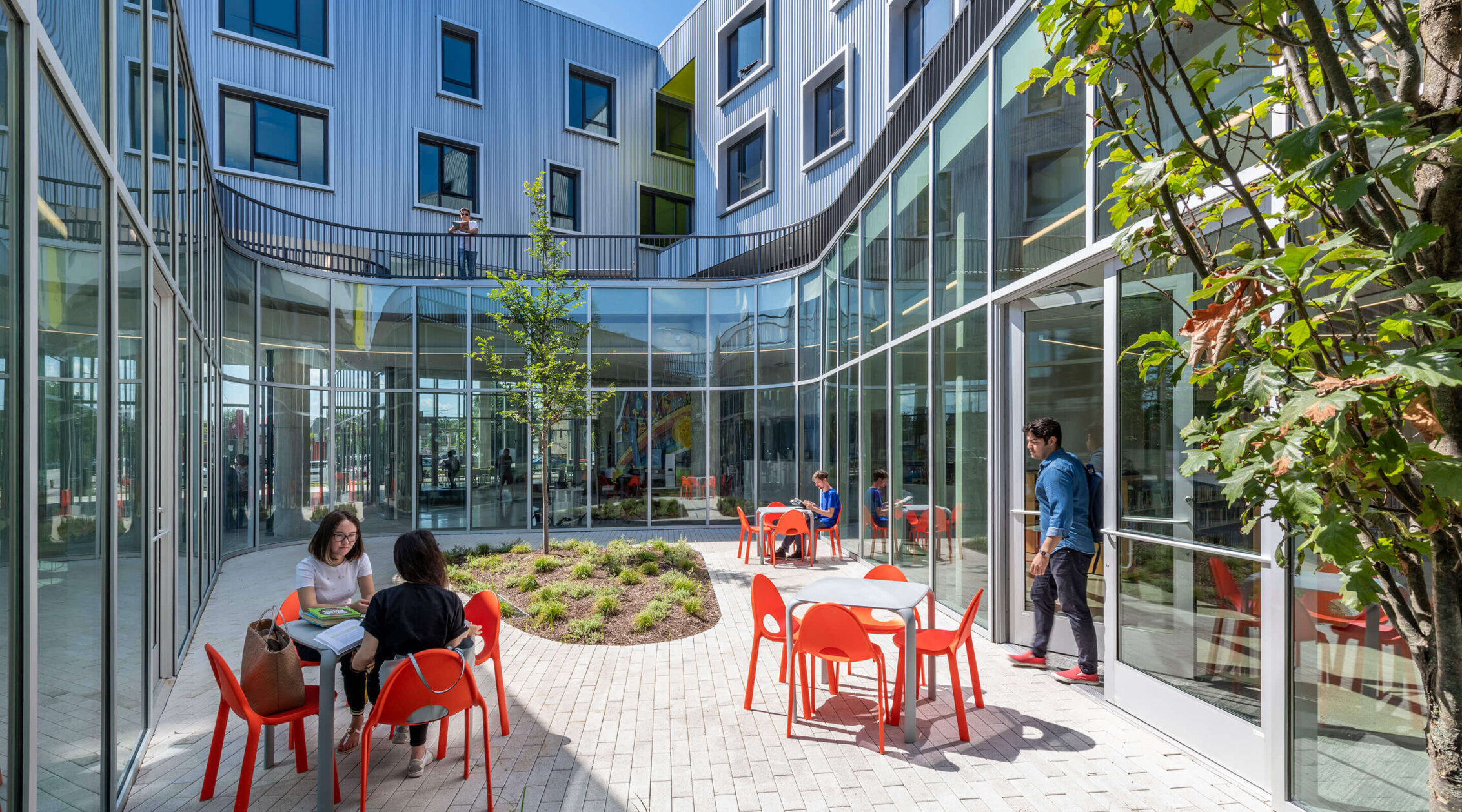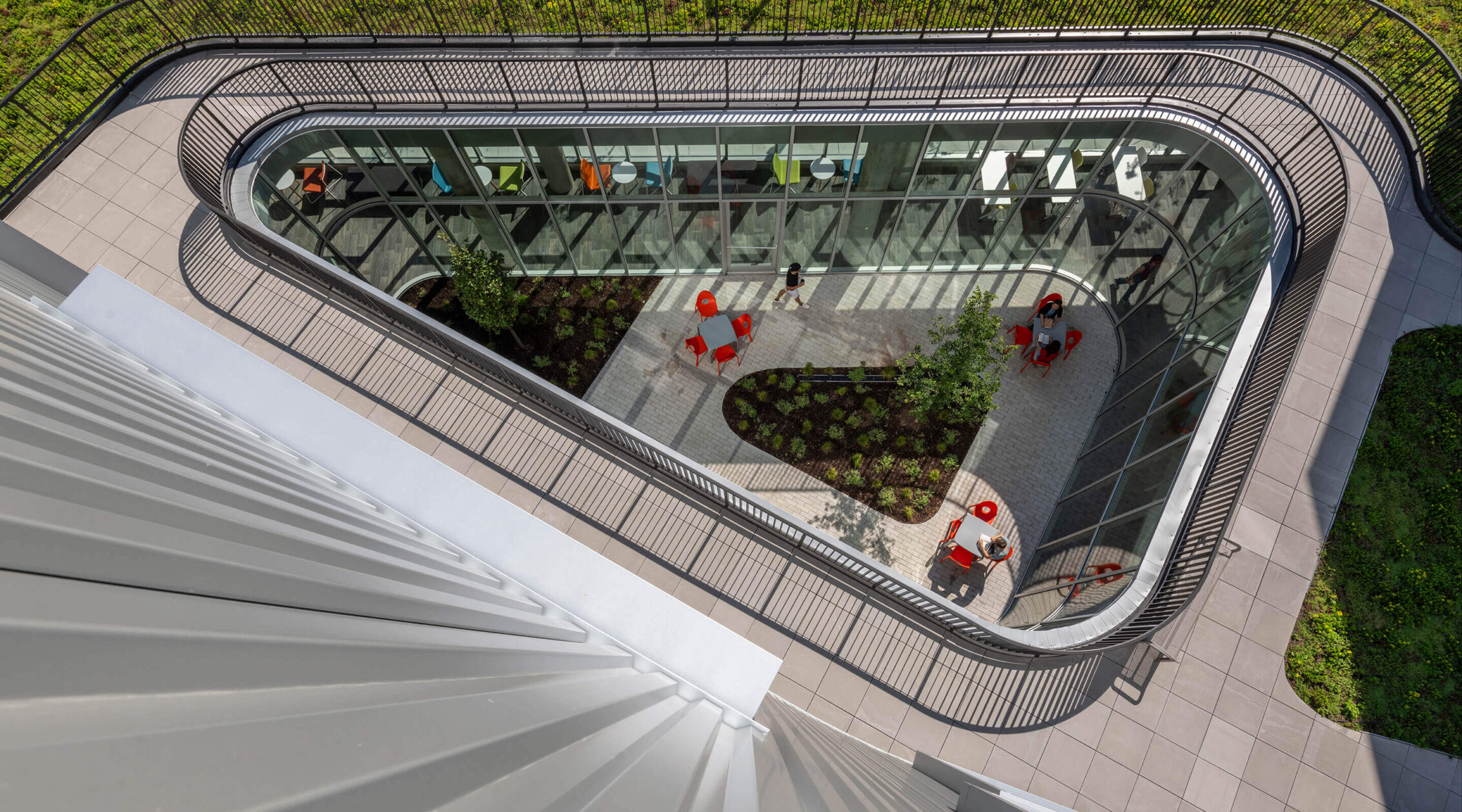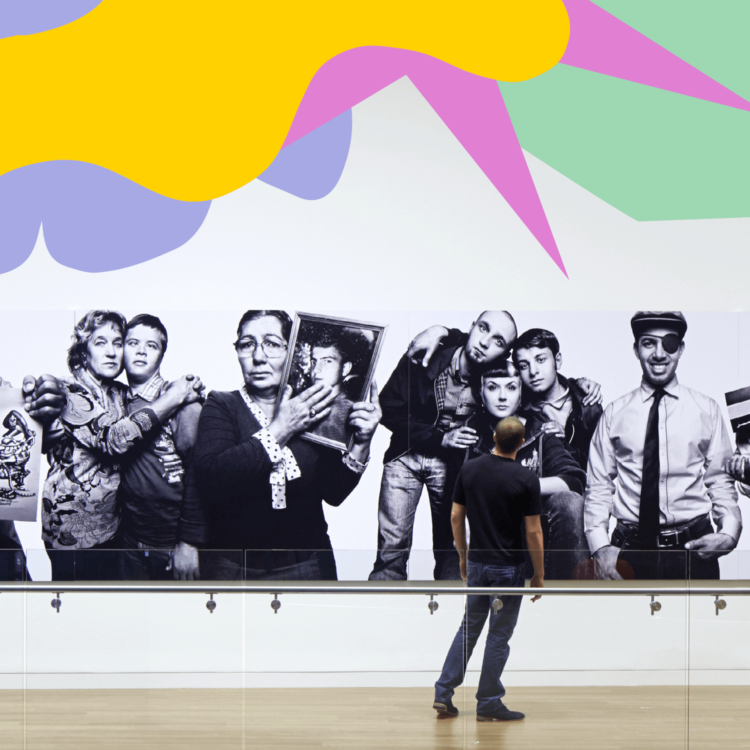The ground floor of a building typically has great potential for a public-serving program. Northtown Library and Apartments in Chicago, owned and developed by Evergreen Real Estate Group, includes 44 units of affordable senior housing on two levels above a public library. “It’s a genius idea and everyone should be doing this,” says Stephen Messinger, co-author of the toolkit. “We know that people live longer, healthier lives if they have access to other people.” Housing that is designed to promote interaction can improve psychological outcomes and reduce loneliness and isolation, which elderly people are especially vulnerable to.
Four ways to develop healthy, affordable homes

Supported by a grant from the ASID (American Society of Interior Designers) Foundation, a team led by researchers at Perkins&Will spent over a year investigating ways to improve housing affordability while creating better living environments. The resulting 138-page Healthy Affordable Housing Toolkit shares strategies from developers, stakeholders, and residents, which can be applied to subsidized or market-rate housing. Here are four takeaways:
